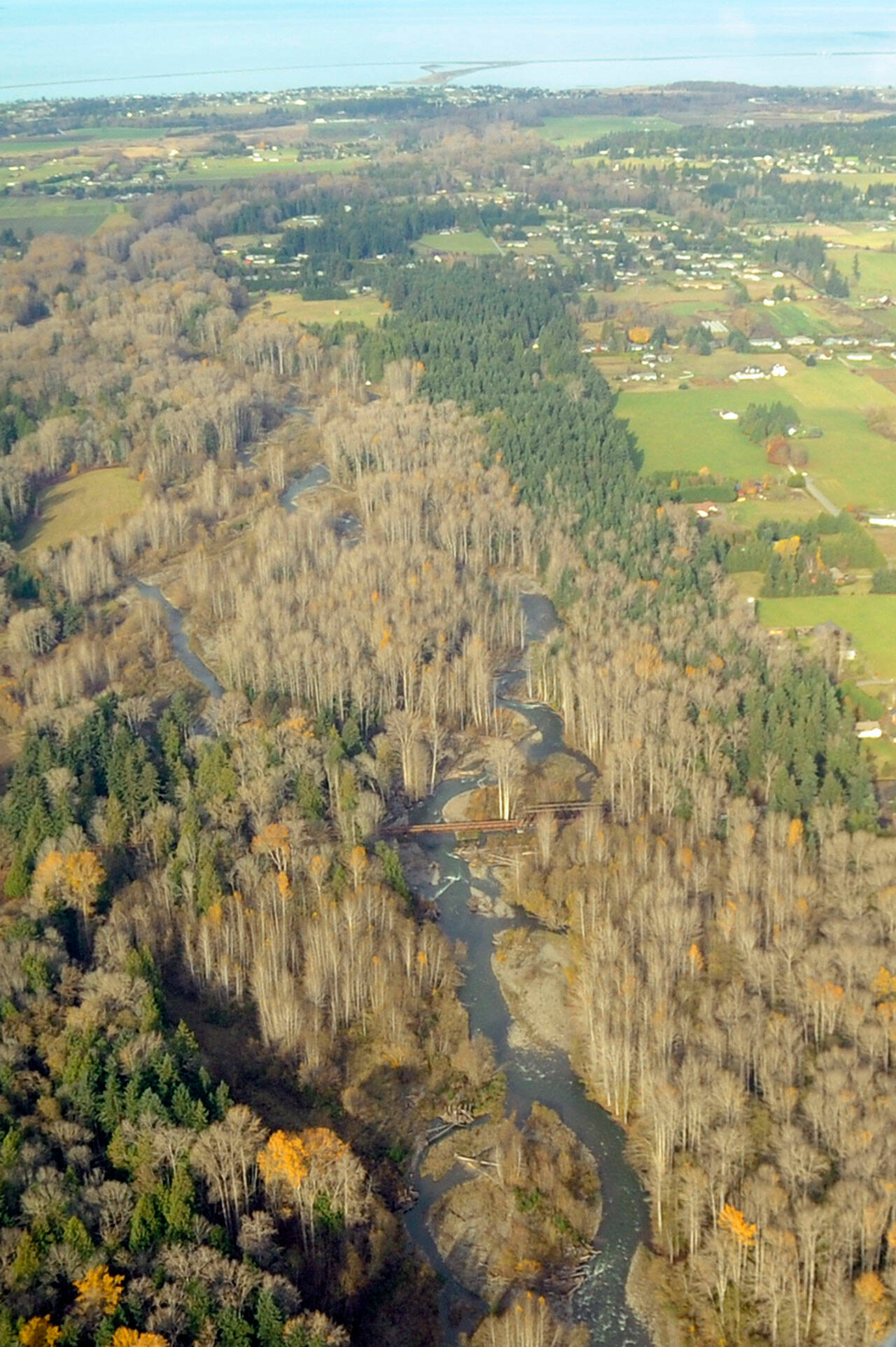BLYN — The Jamestown S’Klallam Tribe has received approval from the U.S. Environmental Protection Agency to administer the Clean Water Act’s water quality standards and certification programs on its reservation and trust lands.
The tribe assumes Clean Water Act authority to manage and protect its surface waters on almost 645 acres near the Dungeness River and Sequim Bay, said Bill Dunbar, spokesperson with the Environmental Protection Agency (EPA), in a press release.
Robert Knapp, the tribe’s environmental planning program manager, said this continues the tribe’s efforts toward self-governance.
“This approval shows the EPA believes the tribe has the capacity to administer water quality standards for surface waters,” he said.
The certification covers streams, rivers, wetlands and marine waters on tribal trust and reservation lands, according to the EPA.
“Once water quality standards for surface waters are developed, approved by EPA and adopted by the tribe, then the tribe will have jurisdiction for water quality on tribal trust and reservation lands just as the (state of Washington) has jurisdiction over water quality on non-federal lands,” Knapp said.
According to the EPA, Jamestown staff applied to the agency for “Treatment in a Similar Manner to a State” (TAS) for the Clean Water Act to inspect its own water quality on Oct. 7, 2021.
The Makah Tribe at Neah Bay was granted such authority in 2003 and its water quality standards were approved in 2006.
The Quinault Nation, headquartered in Taholah, was granted TAS in 2018.
Nine other Washington state tribes have received the jurisdictional control: Chehalis, Colville, Kalispel, Lummi, Port Gamble S’Klallam, Puyallup, Spokane, Swinomish and Tulalip.
Jamestown staff can set water quality goals and standards for its lands after EPA review and approval so that “all applicable water quality standards will be incorporated into Clean Water Act-permitted discharges into reservation waters,” Dunbar said.
“(This approval for water quality certification programs) gives the tribe authority to grant, deny or waive certification of proposed federal licenses or permits that may discharge into waters of the United States,” he said.
Prior to the EPA’s approval, the agency was the certifying authority for the tribe’s waters, Dunbar said.
Knapp said surface water on tribal fee lands would remain subject to state standards.
Dunbar said several federal environmental laws allow the EPA to see federally recognized tribes similarly to a state for implementing and managing some environmental programs.
“The management and protection of water resources are within the jurisdiction of the tribe … and (their staff are) capable of administering the functions of the program (under TAS),” Dunbar said.
Knapp said the tribe’s Natural Resources Department will be responsible for developing standards and submittal to the EPA while the tribe’s Planning Department will implement surface water quality standards.
“(The) Natural Resources Department will continue surface water quality monitoring of newly tribally recognized waters, as well as remaining streams and water bodies of interest,” Knapp said.
“This determination (for certification) is based on (the tribe’s) experience, training and education,” Dunbar said.
Dan Opalski, director of EPA’s Water Division in Seattle, said in a statement that the Jamestown S’Klallam Tribe “has long maintained strong environmental programs, and their commitment to a strong water quality program was evident in their application for Treatment in a Similar Manner as a State.”
“Requiring and achieving excellent water quality is important for our tribal treaty resources, jurisdiction authority and essential for our citizen health,” said W. Ron Allen, Jamestown’s tribal chair and CEO.
“The Tribe is proud of our environmental stewardship and is pleased to achieve this federal recognition of ‘Treatment as a State’ for water quality standards.”
For more about the federal law for tribes’ Treatment as a State, see epa.gov/tribal/tribal-assumption-federal-laws-treatment-state-tas.

